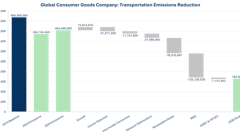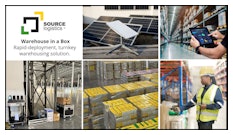
Here's something: your next supply chain disruption is hiding in plain sight. It's lurking inside your contracts right now.
But you can't see it.
Why? Because like most organizations, you probably manage contracts the same way people did 15 years ago. You spend six months just finding the contracts in file cabinets, then months reading them line by line to build an Excel spreadsheet with 52 columns and 500 rows. Pure torture.
The world has changed. Supply chains have become more complex and vulnerable. Yet the way most companies handle contracts — those critical documents that govern your entire supply chain — is stuck in the past.
The hidden predictors in your agreement portfolio
A contract isn't just a legal document. It's a business process. It's how money moves in and out of your company. And when you have thousands of contracts, they contain patterns that can predict what's coming next:
● Which suppliers might increase prices
● Where your supply chain has vulnerabilities
● When key agreements will renew
● Which raw materials might face constraints
These predictions aren't magic. They're data points trapped in documents you already own.
The shift toward operations-led contract management
One of the most significant changes is who manages contracts today. Back in the day, contracts were viewed as "legal's problem." Today, 65-70% of companies don't even have a legal team.
Instead, it's operations and finance leaders taking ownership. Why? Because they recognize that contracts are business processes, not legal documents.
This shift mirrors what happened with IT roles. Remember when the head of IT was just someone who helped you plug in the computer? Today, they're strategic partners. The same transformation is happening with operations and finance leaders who oversee contracts.
AI-powered predictions from your contract data
The real game-changer is how artificial intelligence (AI) is applied to contract analysis. This isn't just about scanning PDFs; it's about extracting actionable intelligence.
According to research from We Shield, predictive analytics is now being used to analyze vast datasets, including weather patterns, political developments, and market trends to foresee potential disruptions before they occur. This proactive approach helps businesses prepare and prevent financial losses.
Modern contract management software with AI capabilities can:
- Extract key terms automatically. AI can pull critical information like renewal dates, price adjustment formulas, and termination rights from contracts in seconds. A study by LeewayHertz shows how AI leverages historical contract data to extract insights and predict potential contract risks and outcomes, revealing patterns and trends that help organizations make informed decisions.
- Identify supply chain vulnerabilities. The World Economic Forum notes that AI will be crucial for protecting global supply chains from future shocks, especially as climate change and geopolitical shifts continue to transform the business landscape.
- Flag problematic contract clauses. Capitol Technology University highlights how AI for "predictive risk management" is being leveraged to identify and anticipate potential risks like natural disasters or geopolitical events, helping companies prepare and mitigate disruptions.
- Warn about upcoming renewals and deadlines. As noted in research by Wolters Kluwer, AI-powered contract management enhances visibility into your enterprise contract portfolio and can rapidly extract and organize renewal dates from all contracts, preventing unwanted auto-renewals.
From reactive to predictive: a fundamental shift
The traditional approach to contract management was reactive: wait for something to go wrong, then scramble to find the relevant document to figure out your rights and options.
Predictive AI models are changing this dynamic. Companies are aiming to be more predictive than reactive. Using predictive AI, companies can estimate the expected delay caused by disruptions like natural disasters, allowing proactive response instead of reactive crisis management.
This shift isn't just an efficiency gain — it's a competitive advantage. Organizations that harness their contract data will make better-informed decisions, avoid costly disruptions, and negotiate from positions of strength.
Getting started: practical steps
You don't need to overhaul your entire contract management approach overnight. Start with these focused steps:
- Centralize contracts in one digital repository. You can't analyze what you can't find. Modern contract repository software makes it easy to gather all your agreements in one searchable database.
- Focus on high-impact contract categories first. Begin with your most critical supplier agreements or contracts with the highest dollar values. According to SpotDraft, supplement contract data with external market trends, regulatory updates, and competitor insights for a more comprehensive picture.
- Apply AI to extract key metadata. Use AI-powered tools to automatically extract dates, prices, renewal terms, and other key data points from your contracts. Oboloo explains that this not only saves time but also reduces the risk of human error.
- Build predictive workflows. Create automated alerts for potential price increases, renewal deadlines, or other critical events identified through contract analysis.
- Use insights to inform negotiations. When data from your contract portfolio indicates a potential supply constraint or price increase, use this intelligence to negotiate more favorable terms before problems arise.
The future belongs to the contract-intelligent
In today's volatile business environment, supply chain leaders can't afford to be in the dark about what their contracts are telling them. As Supply & Demand Chain Executive notes, "predictive analytics can be used to envisage a series of outcomes (forecasting) or uncertainties related to outcomes (simulation)."
The organizations that will thrive are those that transform their contracts from static documents into dynamic predictive tools.
Fortunately, you don't need to be a technology giant to make this shift. Start small, focus on specific use cases, and build from there. The future of supply chain resilience depends on your ability to listen to what your contracts are already telling you about what's coming next.




![2022 06 20 12 18 26 [digads 32976] Sdce Enveyo Entent July (2022) Jira](https://img.foodlogistics.com/files/base/acbm/scn/image/2022/06/2022_06_20_12_18_26__DIGADS_32976__SDCE___Enveyo___ENTENT___July__2022____JIRA.62b0af8bb8a18.png?auto=format%2Ccompress&fit=crop&h=167&q=70&w=250)














